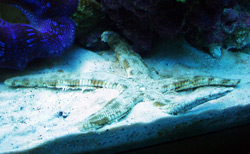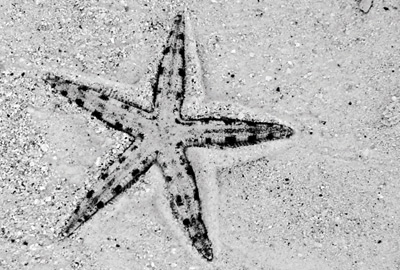If you’ve ever shopped for a marine aquarium cleanup crew, you’ve probably noticed that these packages often include so-called sand-sifting starfish—rather bland-colored, burrowing stars of the genus Astropecten that can reach about a foot in diameter.
As their common name implies, these stars are sold to hobbyists for the purpose of consuming detritus and uneaten food and turning over the sand bed. However, what’s often left out of the language used to market these stars as utility organisms is the fact that they tend to do their job too well.
Eating themselves out of house and home
What do I mean by this? As sand-sifting starfish move through a sand bed, they consume any edible item they come across—and that’s not limited to uneaten fish food that you don’t want to decompose and foul your tank. In the process, they also gobble up all the microfauna they encounter, such as worms, snails, tiny brittlestars and sea cucumbers, “pods,” etc.
This very efficient eating behavior has two undesirable outcomes:
- Very commonly, the starfish very rapidly consumes all the available microfauna and then starves to death (potentially unobserved in the sand bed, where it can decompose to the detriment of water quality).
- You’re left with a sand bed that’s now essentially devoid of all the life that was keeping it healthy to begin with—and that you more or less paid good money for when you purchased your live rock and/or live sand.
So, should they be avoided?

In a very large system with a well-established, expansive sand bed that is several inches deep and very productive with respect to microfauna, it might be possible to sustain one. However, the odds of long-term success with these stars, even under the best of circumstances, aren’t good.
Also, don’t assume that just because a specimen survives for several months or even a year or two in your system that it’s out of the proverbial woods. A starving specimen can still cling to life for quite some time before “giving up the ghost.”
Some hobbyists report success with target feeding these stars, for example by injecting food items below the surface of the sand bed or placing the starfish directly on top of a food item, but these techniques don’t work in all cases.
The bottom line: Generally speaking, I would dissuade most hobbyists from introducing these starfish to their aquariums.



